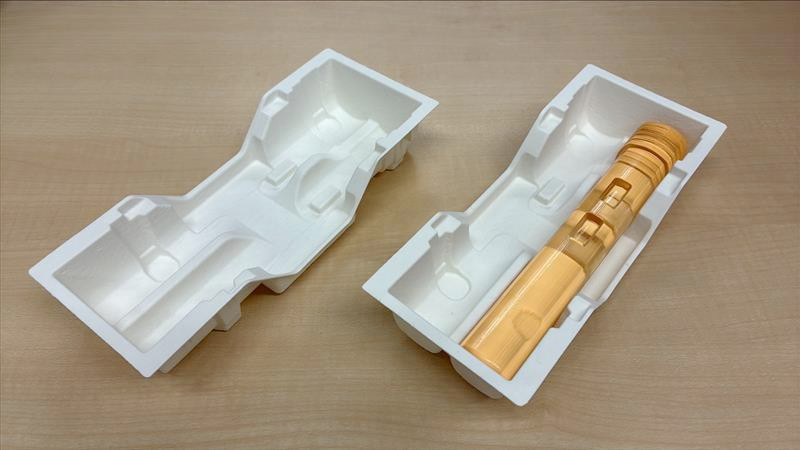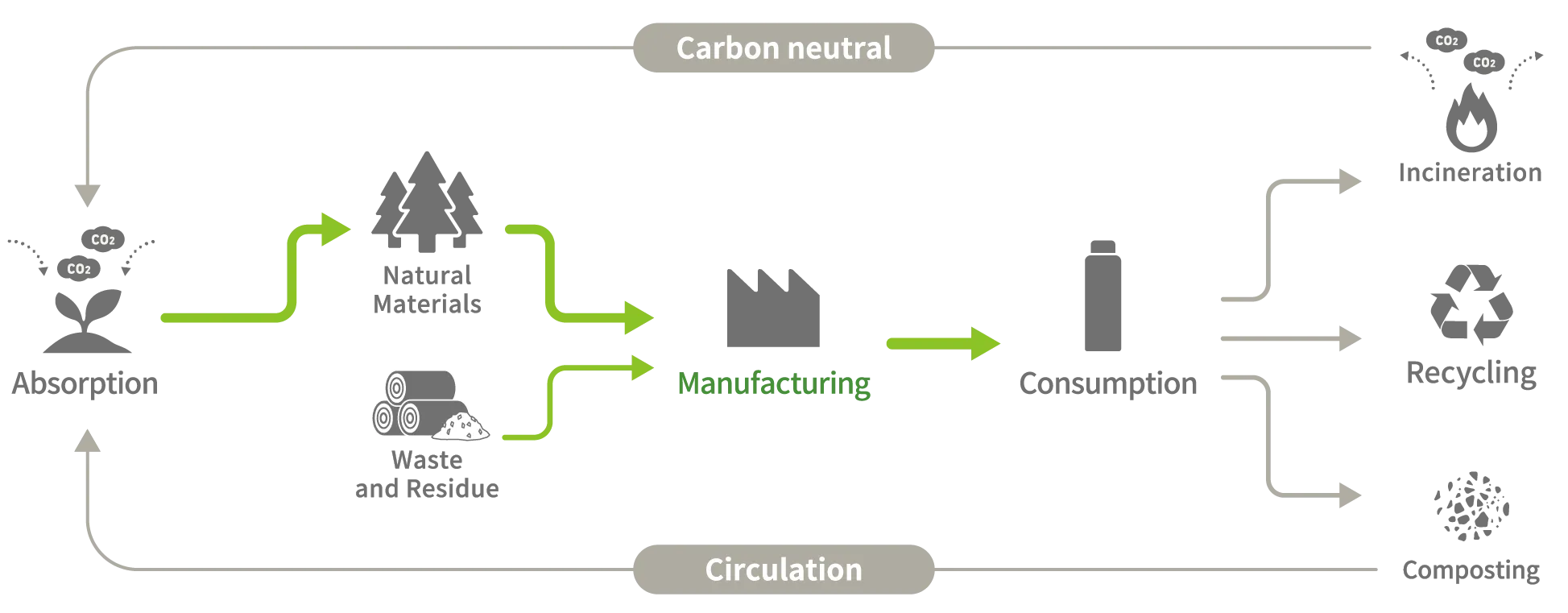Tailored Packaging Solutions, Just for You


As the world faces challenges like climate change, resource depletion, and pollution, environmental sustainability has become an essential global focus.
Tailored Packaging Solutions, Just for You

As the world faces challenges like climate change, resource depletion, and pollution, environmental sustainability has become an essential global focus. Governments, businesses, and individuals are all looking for practical solutions to reduce harm and restore balance to our ecosystems.
One of the most effective and accessible strategies is recycling. But how can recycling materials lead to environmental sustainability?
Recycling actually plays a key role in environmental sustainability as it reduces the need for raw materials, conserves energy, reduces pollution, and so much more.
Through recycling, we can help create a sustainable future for the planet, one material at a time. Today, we’ll explore how this simple act can make a big impact.
Everything that humans depend on (whether directly or indirectly) relies on our natural environment. From clean water and fertile soil to breathable air, our wellbeing and economies are closely tied to the health of the planet.
Environmental sustainability means meeting today’s needs without compromising the ability of future generations to meet theirs. It’s about using resources responsibly to ensure long-term balance between people and nature.
This principle is central to the United Nations’ 17 Sustainable Development Goals (SDGs)– a global framework for building a more equitable and sustainable world.

At the heart of the SDGs are three pillars of sustainability: social, economic, and environmental, which are often referred to as the “Triple Bottom Line” of People, Planet, and Profit.
And while all pillars are essential, today we will focus mainly on environmental sustainability, and how recycling supports a healthier, more resilient planet.
Recycling is the process of collecting and reprocessing waste materials generated by consumption into new materials and objects.
This idea fits within the broader “Reduce, Reuse, Recycle” framework, which encourages minimizing waste at every stage.
The recycling process generally follows these steps:

Sometimes, recycling also includes recovering energy from waste materials, further maximizing resource use.
Recycling is a simple action with a big impact. By turning waste into new products, we reduce the need for raw materials, save energy, and prevent pollution. These benefits make recycling a vital part of building a sustainable future.
For example, recycling just one ton of paper saves 17 trees, 7,000 gallons of water, and enough electricity to power a home for months.
Here are some of the key ways recycling supports environmental sustainability.
According to OECD, globally 91% of plastic waste is not recycled, with nearly 50% going to sanitary landfills.
One of recycling’s main goals is to cut down on this waste. Landfills produce harmful methane emissions and can contaminate soil with heavy metals and microplastics, causing long-term environmental damage.
By diverting materials from landfills, recycling helps reduce these negative impacts and protect ecosystems.
Recycling uses significantly less energy compared to producing items from raw materials.
For example, recycling one ton of paper saves enough energy to power an average American home for six months, according to the EPA. Because processing recycled materials requires less effort, it also reduces greenhouse gas emissions.
If global recycling rates were increased, energy savings could result in the reduction of millions of tons of carbon dioxide annually.
Recycling plays a powerful role in fighting climate change. By reducing the need to extract and process raw materials, it cuts down on energy use, and with it, greenhouse gas emissions.
Take landfills, for example. They’re a major source of methane, a greenhouse gas over 25 times more potent than carbon dioxide. When we recycle instead of sending waste to landfills, we help prevent those emissions at the source.
Recycling also means we burn less fossil fuel during manufacturing, leading to a smaller carbon footprint overall. In fact, global recycling efforts have the potential to reduce over 700 million metric tons of emissions every year.
Even the choice of materials matters. Innovative solutions like Pulp-Injection, which is recyclable as paper, support these efforts by keeping valuable resources in circulation and out of landfills or incinerators.
Recycling helps reduce the costs of waste disposal and landfill management – expenses that add up quickly for both governments and businesses.
It also helps companies avoid extra charges tied to low recycling rates. For example, the EU has proposed a Plastic Tax of €0.80 fee per kilogram of non-recycled plastic packaging. While it’s not yet an obligatory regulation, this directive serves as guidance, and each EU member state is now introducing its own rules in response.
Many countries are creating their own financial incentives or penalties to discourage plastic use and encourage recycling, making it even more important for businesses to proactively adapt.
On the consumer side, recycling keeps product prices lower. Items like aluminum cans would be much more expensive if manufacturers had to rely on raw materials instead of recycled ones.
Recycling starts long before the bin, it starts with design. For businesses and governments aiming to boost recycling rates, switching to packaging that’s actually recyclable is one of the most effective moves.
Innovative solutions like Pulp-Injection make this possible. Made from pulp and starch, it combines the versatility of plastic with the recyclability of paper. Thanks to the high pulp content, the products are classified as non-corrugated fiberboard with PAP 21 recycling code and recyclable in existing paper recycling system.

It’s also well-suited for a wide range of uses and can be processed through existing paper recycling streams.
Learn more about how pharmaceutical companies use Pulp-Injection for their autoinjector trays.
Another strong example is Sulapac®. While known for being biodegradable, its real strength lies in its mechanical and chemical recyclability. It looks and functions like plastic, but without the long-term environmental toll. This makes it a smart choice for brands looking to minimize plastic waste and future-proof their packaging.
These types of solutions don’t just reduce landfill waste, they also help businesses meet growing consumer demand for sustainability, all while maintaining product quality and aesthetics.
Wanting to recycle is one thing, knowing how to do it right is another.
Many people are unsure about what materials are actually recyclable or how to properly sort them. This confusion often leads to contamination, like food-soiled containers or mixed materials, which can cause entire batches of recyclables to be rejected and sent to landfills.
That’s where education and awareness programs come in. When communities understand the do’s and don’ts of recycling, participation improves, and so does the quality of what gets recycled.
Clear, consistent awareness programs empower people to recycle properly and help make recycling systems more effective from the ground up.
Government policies are key drivers in advancing recycling and sustainable packaging. The Regulation (EU) 2025/40, Packaging and Packaging Waste Regulation (PPWR) sets ambitious targets to improve packaging recyclability and reduce waste, encouraging businesses to design with the circular economy in mind.
For example, the EU’s new Packaging and Packaging Waste Regulation (Regulation (EU) 2025/40) sets clear rules to increase the use of recycled plastic. It was published in January 2025, comes into force on 11 February 2025, and will apply from 12 August 2026.
The regulation introduces minimum recycled content targets for plastic packaging, starting in 2030 and increasing by 2040. For instance:
These legally binding targets show how EU policy is shifting from guidance to enforcement, pushing businesses to redesign packaging with recycled materials in mind.
Extended Producer Responsibility (EPR) also holds manufacturers accountable for their products throughout the entire lifecycle, pushing companies toward sustainable design and better waste management.
To further support these goals, governments offer incentives like tax credits or subsidies for companies that use recycled materials, run take-back programs, or achieve measurable packaging waste reductions.
At the same time, each EU country is developing its own recycling systems and infrastructure, aligned with EU-wide goals but tailored to local capabilities.
For example, France has launched a national strategy to improve recycling for plastics and textiles, as part of its broader push toward circularity. Its PET and paper recycling systems are well established, while recycling for materials likepolypropylene (PP) still lags behind.
Meanwhile, the UK has made strong progress in industrial composting infrastructure, making it easier to process biodegradable packaging materials at scale.
These local variations are important for brands operating across Europe, as they must adapt to different national rules, recycling capacities, and infrastructure readiness, all while staying compliant with the overarching EU regulations.
The circular economy shifts focus from disposable, single-use products to designs that prioritize longevity, repair, and recyclability. This approach reduces waste, supports sustainable product creation, and keeps valuable resources in use longer.
Nissha embraces these principles with innovative materials designed to reduce environmental impact, including:
*Organic recycling refers specifically to composting biodegradable materials so they decompose and enrich the soil, distinct from mechanical or chemical recycling of plastics and metals

Recycling is evolving beyond traditional methods to tackle complex waste more effectively.
One standout innovation is chemical recycling, which breaks down plastics that mechanical recycling can’t handle. By converting plastics back into their basic components, chemical recycling gives these materials a new life, reducing waste and supporting a circular economy.
This breakthrough is key to solving plastic pollution challenges that old-school recycling struggles with.
Recycling plays a vital role in creating a more sustainable future, but it starts with the right materials.
Nissha’s Pulp Series and Sulapac® solutions offer biodegradable and recyclable solutions for eco-conscious brands. Both are designed to minimize waste, reduce reliance on fossil-based plastics, and support a circular economy – whether through organic recycling, composting, or integration into existing recycling streams.
So, if you’re looking to turn your packaging into a force for good, the solution is already here.
Partner with us and start building a packaging strategy that aligns with your values, and the planet’s needs.

We here at Nissha will support you every step of the way!
















